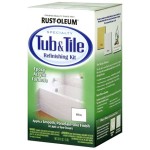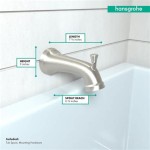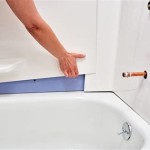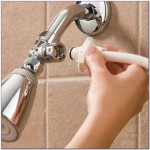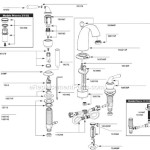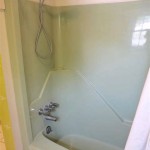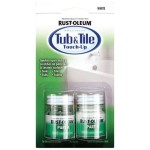Bathtub Surround With Window Kitchen Sink: A Comprehensive Guide
The integration of a window near a bathtub surround and incorporating a kitchen sink design into a bathroom space represents a confluence of architectural aesthetics and practical functionality. These design choices, although seemingly disparate, address specific needs for natural light, ventilation, and space utilization within a residential setting. This article aims to explore the intricacies of these design elements, examining their benefits, considerations, and potential applications.
A bathtub surround refers to the vertical surfaces immediately surrounding a bathtub, designed primarily to protect the walls from water damage and enhance the overall aesthetic of the bathing area. Traditionally, these surrounds are constructed from materials such as tile, acrylic, fiberglass, or stone. The inclusion of a window within the bathtub surround presents a unique set of challenges and opportunities, demanding careful consideration of waterproofing, privacy, and energy efficiency.
Conversely, the concept of a "kitchen sink" within a bathroom context might appear unconventional at first glance. However, in certain circumstances, such as in-law suites, studios, or converted spaces, incorporating a smaller-scale kitchen sink can significantly enhance the functionality of the bathroom area. This approach is particularly relevant in situations where space is limited, and a full-fledged kitchen is impractical or unnecessary. The integration of such a sink necessitates careful planning in terms of plumbing, drainage, and overall design coherence.
Benefits of a Window in the Bathtub Surround
The inclusion of a window within the bathtub surround offers several distinct advantages, primarily related to natural light, ventilation, and the overall ambiance of the bathroom. One of the significant benefits is the introduction of natural light into the bathing area. Bathrooms are often interior spaces with limited or no access to direct sunlight. A window within the bathtub surround can alleviate this issue by allowing natural light to penetrate the space, creating a brighter and more inviting environment. This can also significantly reduce the reliance on artificial lighting during the day, contributing to energy savings.
Ventilation is another crucial aspect addressed by incorporating a window. Bathrooms are prone to humidity buildup, which can lead to mold and mildew growth. A window provides a means of natural ventilation, allowing moist air to escape and preventing the accumulation of excessive humidity. This is particularly important after showers or baths, when the air is saturated with moisture. Proper ventilation helps maintain a healthy and comfortable environment within the bathroom.
Beyond the practical benefits, a window can also enhance the aesthetic appeal of the bathroom. It offers the opportunity to incorporate views of the surrounding landscape, creating a more relaxing and enjoyable bathing experience. The window can act as a focal point, drawing the eye and adding visual interest to the space. The size, shape, and style of the window can be customized to complement the overall design of the bathroom, contributing to a cohesive and aesthetically pleasing environment.
However, the inclusion of a window also requires careful consideration of privacy. Strategies to achieve privacy include using frosted or textured glass, incorporating window coverings such as blinds or shades, or strategically positioning the window to minimize visibility from neighboring properties. The choice of privacy solution will depend on the specific location of the window and the desired level of privacy. Maintaining a balance between natural light and privacy is essential for creating a comfortable and functional bathing space.
Considerations for Incorporating a Kitchen Sink in a Bathroom
The decision to include a kitchen sink in a bathroom setting is driven by specific functional requirements and space constraints. When a separate kitchenette is not feasible, a smaller kitchen sink can serve as a multi-purpose fixture, accommodating tasks such as washing dishes, preparing light meals, or cleaning small items. This is particularly beneficial in spaces such as in-law suites, studio apartments, or converted garages where residents desire a degree of self-sufficiency.
Plumbing considerations are paramount when integrating a kitchen sink into a bathroom. The sink must be connected to both a potable water supply and a drainage system that can handle food particles and grease. This may require modifications to the existing plumbing infrastructure, ensuring compliance with local building codes. The drain line should include a P-trap to prevent sewer gases from entering the bathroom. Furthermore, the hot and cold water supply lines should be adequately sized to provide sufficient water pressure to the sink faucet.
Space planning is crucial to ensure that the kitchen sink does not overwhelm the bathroom. Smaller-sized sinks, such as bar sinks or prep sinks, are often suitable for bathroom applications. The sink should be integrated seamlessly into the bathroom design, considering the available countertop space, storage options, and overall traffic flow. A well-designed vanity cabinet can provide storage space for kitchen essentials, helping to maintain a clutter-free environment. The aesthetics of the sink and faucet should complement the existing bathroom fixtures and finishes, creating a cohesive and harmonious design.
Hygiene and sanitation are additional considerations when incorporating a kitchen sink in a bathroom. The sink should be cleaned regularly to prevent the buildup of food particles and bacteria. Separate cleaning supplies should be designated for the kitchen sink to avoid cross-contamination with bathroom cleaning products. Proper ventilation is essential to prevent the growth of mold and mildew, particularly in the area around the sink. The use of antimicrobial surfaces and materials can also help to maintain a clean and hygienic environment.
Materials and Construction Details
The selection of materials for both the bathtub surround with window and the kitchen sink is crucial for both longevity and aesthetic appeal. For the bathtub surround, materials must be waterproof and resistant to moisture damage. Common choices include ceramic or porcelain tile, acrylic panels, fiberglass, and natural stone such as granite or marble. Tile offers a wide range of design options and is relatively easy to maintain. Acrylic panels provide a seamless, waterproof surface and are available in various colors and textures. Fiberglass is a cost-effective option, but it may be less durable than other materials. Natural stone offers a luxurious look but requires regular sealing to prevent staining.
The window within the bathtub surround must be constructed from water-resistant materials such as vinyl or fiberglass. The glass should be tempered or laminated for safety, minimizing the risk of injury in case of breakage. Proper flashing and sealing around the window are essential to prevent water from penetrating the surrounding walls. A sloped sill can help to direct water away from the window frame. The window should be designed to allow for easy cleaning and maintenance.
For the kitchen sink, stainless steel is a popular choice due to its durability, resistance to staining, and ease of cleaning. Other options include enameled cast iron, composite materials, and copper. The sink should be sized appropriately for the bathroom space, considering the available counter space and the intended use of the sink. The faucet should be chosen to complement the sink design and provide adequate water flow. A single-handle faucet is often preferred for its ease of use. The drain assembly should be made from durable materials such as brass or stainless steel.
Construction details are critical for ensuring the long-term performance of both the bathtub surround with window and the kitchen sink. Proper waterproofing is essential to prevent water damage and mold growth. This includes applying a waterproof membrane behind the tile or acrylic panels, sealing all joints and seams, and using a waterproof grout. The window should be installed according to manufacturer's instructions, ensuring proper flashing and sealing. The kitchen sink should be securely mounted to the countertop, and all plumbing connections should be leak-proof. Regular maintenance, such as cleaning and sealing, is essential for preserving the appearance and functionality of these design elements.
Careful planning and execution are paramount for successfully integrating a window into a bathtub surround and incorporating a kitchen sink into a bathroom. These design choices offer numerous benefits, but they also require careful consideration of various factors, including waterproofing, privacy, space planning, and materials selection. By addressing these considerations effectively, it is possible to create a bathroom space that is both functional and aesthetically pleasing.

White Bathroom Window With Blinds

Bathtub Under Window Design Ideas

The Modern Bathroom What Are Top 5 Types Of Showers To Choose From Follow Yellow Brick Home

Choosing Shower Tile For Our Bathroom The Diy Playbook

Soaking Tub Under Window

Photo 13 Of 14 In How One Family Three Does It All 675 Square

Washstand Under Window Transitional Bathroom Benco Construction

Window In Kitchen Backsplash Design Ideas

Amazing Kitchen Sink Window Ideas You Need To Know

Window Above Tub Photos Ideas
Related Posts

